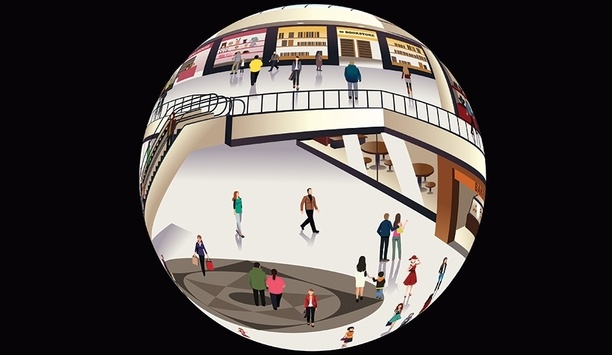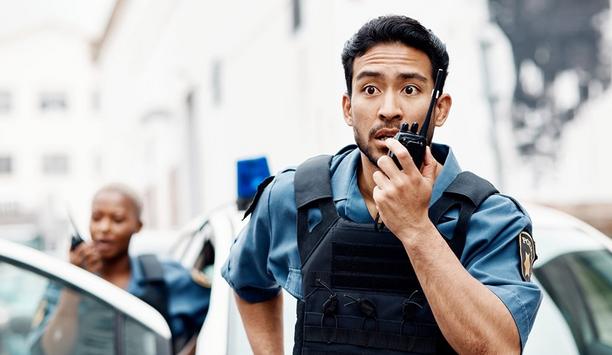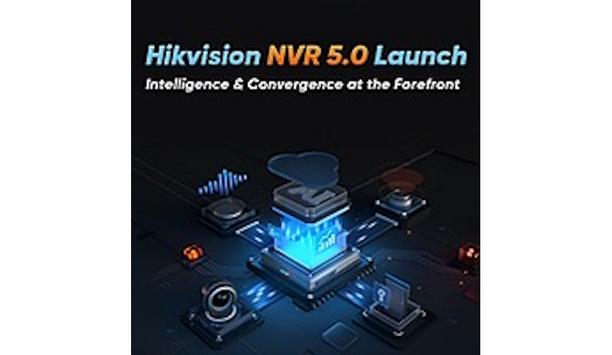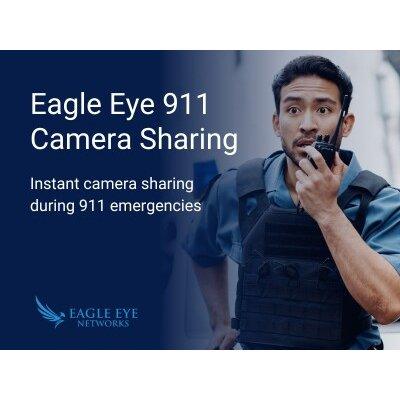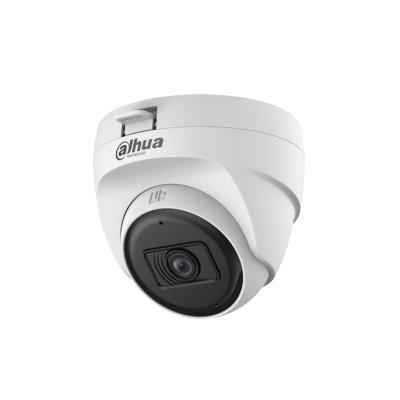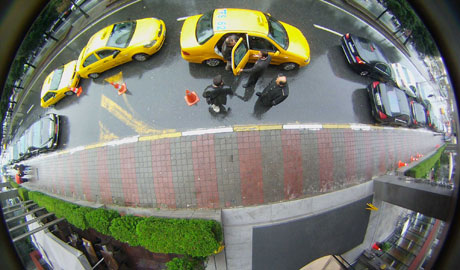 |
| As the technology in omnidirectional cameras continues to improve, they are becoming increasingly more affordable to a wider segment of the video surveillance market |
Just a few years ago, omnidirectional cameras were a novelty. Today, however, this technology has taken the leap to the mainstream. Think about how ubiquitous Google’s Street View is, and you can gain a better idea of the power of omnidirectional cameras. Even consumers are starting to see many forms of omnidirectional cameras, from 360-degree lenses on SLRs to 360-degree video from action cameras.
To that end, 360-degree cameras represent one of the strongest areas of growth in surveillance technology, with global unit shipments forecasted by IHS to increase by more than 60 percent year-on-year.
Omnidirectional vs. traditional cameras
Both 360- and 180-degree surveillance cameras offer panoramic views, helping reduce the number of traditional narrow field-of-view cameras needed in a single installation. Omnidirectional cameras can also be used in concert with PTZ cameras, or replace them entirely depending on the application. Not only does this help increase situational awareness, it decreases the overall cost of the cameras, installation and maintenance.
Compared to PTZ cameras, omnidirectional cameras have the advantage of being able to pan, tilt and zoom around in both live, as well as stored video, which means operators can pinpoint problems in real-time, ensuring incidents can be resolved quickly and efficiently, and at the same time, go back to stored 360-degree video to conduct investigations.
The option for 180- and 360-degree coverage from a single camera is delivered via a specialised lens on one sensor or a camera that integrates with multiple sensors with conventional lenses aligned to provide an ultra-wide-angle coverage. Single-lens or “fisheye” cameras use a specialised lens called a fisheye lens, which, when compared to a conventional lens, employs different optical design techniques that can lead to the distortion of the captured image when viewing beyond a 90-degree horizontal field-of-view. With this, “barrel distortion” can occur, where a circular image is created and a straight line within the captured image appears curved. ‘Dewarping’ software has to be used to correct this optical illusion.
As a consequence of lens design idiosyncrasies in 180- and 360-degree fisheye cameras, either an oval or circular shaped imaged is created. Since image sensors used in surveillance cameras are square or rectangular, some parts of the sensor are not used.
Increasingly affordable solutions
As the technology in these types of cameras continues to improve, they are becoming increasingly more affordable to a wider segment of the video surveillance market. Similarly, higher resolutions and more affordable storage for video data make it more affordable to get increased amounts of coverage and detail at the same time.
As mentioned previously, cost savings can also be realised when a single 360-degree camera replaces three to four fixed cameras, a result that can be recreated in other areas or departments within an organisation to help realise additional cost savings.
Fisheye vs. multi-sensor
Fisheye and multi-sensor cameras both create panoramic images, but do so in very different ways.
Fisheye cameras capture the whole scene in a single view without having to stitch images, so the full view of the captured video footage has consistent brightness, sharpness and contrast across the entire scene. Fisheye cameras also offer a number of other benefits: higher reliability as a result of a single sensor, camera and lens arrangement; no blind spots; fixed focus, making installation quicker; lower cost; and a smaller, less obtrusive form factor. Additionally, the dewarping of the image is carried out in the video management system or network video recorder, allowing for higher frame rates at any given bandwidth.
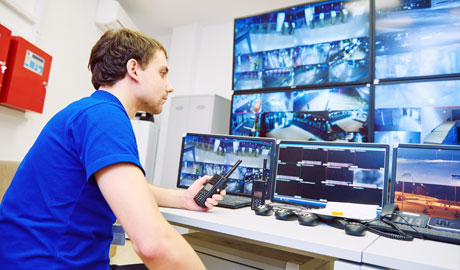 |
| Omnidirectional cameras can pan, tilt and zoom around in both live and stored video, which means operators can pinpoint problems in real-time |
However, fisheye cameras may have fewer pixels per foot, depending on the total resolution, and these types of cameras require client-side dewarping to gain the full benefits of retrospective image adjustment – that is, dewarping of stored video for investigations. Multi-sensor cameras, on the other hand, may offer a higher total resolution depending on the individual resolution of each of the sensors within the camera. Here, dewarping is not required since each sensor is, in essence, a narrow field-of-view camera.
Multi-sensor cameras, however, have more than one sensor, which can lead to an overall higher maintenance costs, and with four or more cameras needed to cover a specific area, there is an increased risk that one or more of the sensors can malfunction — in essence, lower reliability. Installation of multi-sensor cameras is also more complicated and more time-intensive. Additionally, the units themselves can be large and bulky, and complex to operator and manage — each view has to be stitched together, which means captured images have to be carefully calibrated with the correct brightness, colour, contrast and sharpness for the image to be as clear and seamless as it needs to be for viewing and evidentiary purposes. Other possible considerations include: additional licensing fees for each camera connected to an NVR or VMS, total frame rate is generally lower and bandwidth usage will be high. Also, storage costs are higher.
As businesses look to increase situational awareness by investing in omnidirectional cameras, it’s important to carefully evaluate the technology being implemented and various options before moving forward with an implementation |
Dewarping images
If a camera sends a 360-degree image, the VMS software has to dewarp the image so that users can get normal views while electronically PTZ’ing around in the image. This is called “client-side” dewarping.
With client-side dewarping, images can be dewarped retrospectively — that is, stored video can be dewarped, enabling users to forensically analyse a scene after the fact. The result is that investigations can be carried on as if the video were being watched in real time, making the data indispensable to investigators examining the details of a crime or security breach. Not only does this approach deliver new levels of situational awareness, but it also allows officials to use the data to examine additional areas of interest.
The virtual PTZ function can only be experienced via client-side dewarping for stored video, and it can also be run on still images. Additionally, different parts of the image might be useful for different applications that are hard to predict in advance. For example, a merchandiser may want to zoom in and look at signage or an end cap after the fact to gain better insight into the business. Client-side dewarping may also be run on mobile devices, on either live or on stored video.
One challenge of client-side dewarping is that VMS and NVR platforms have to support this function. There are already a large number of platforms that support this functionality because of end user demand. On the other hand, camera-side dewarping does not require a VMS/NVR platform to integrate this function. Camera-side dewarping means you can only virtually PTZ around in a live scene, which is the same as using a motorised PTZ camera – and this function requires an operator to manually navigate and record what the camera sees. Once these views are fixed, a user may only see those views in stored footage, severely limiting the possibility of being able to capture a wider scene for analysis. This means there may be more blind spots in live and stored video depending on how the views are configured.
Evaluating technology implemented
As businesses look to increase situational awareness by investing in omnidirectional cameras, it’s important to carefully evaluate the technology being implemented and various options before moving forward with an implementation. There are a number of pros and cons to dewarping software and the views within the cameras to consider.
But, with higher resolutions and more efficient dewarping/stitching technologies, omnidirectional cameras may soon replace narrow field-of-view and PTZ cameras in a number of vertical markets, including transportation, retail, education, banking and finance, maritime, leisure and gaming, ushering in a new era of total situational awareness with a wealth of data and insight yet untapped.




